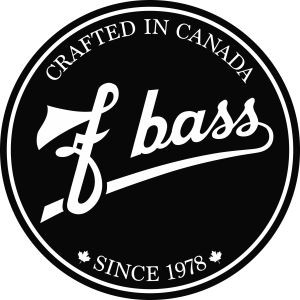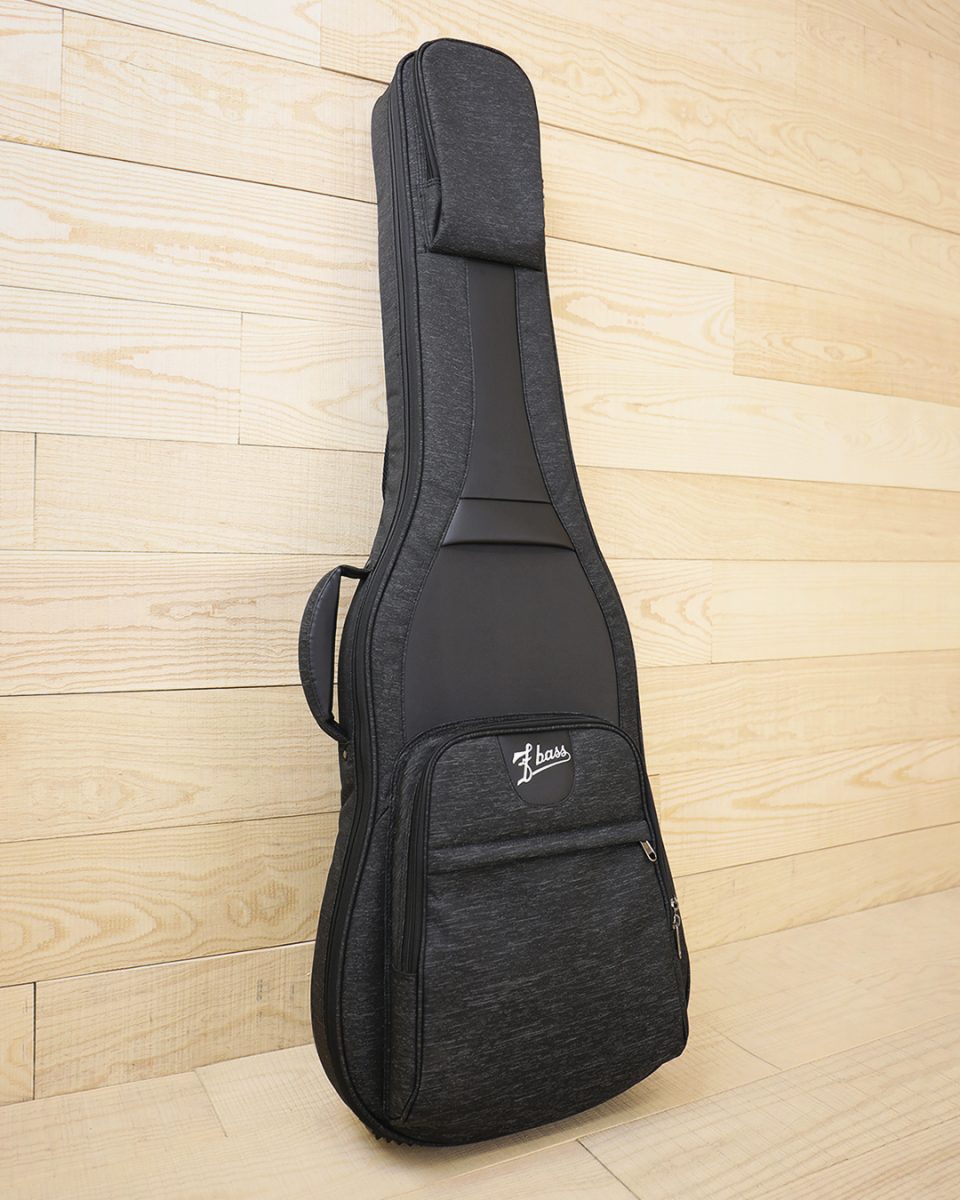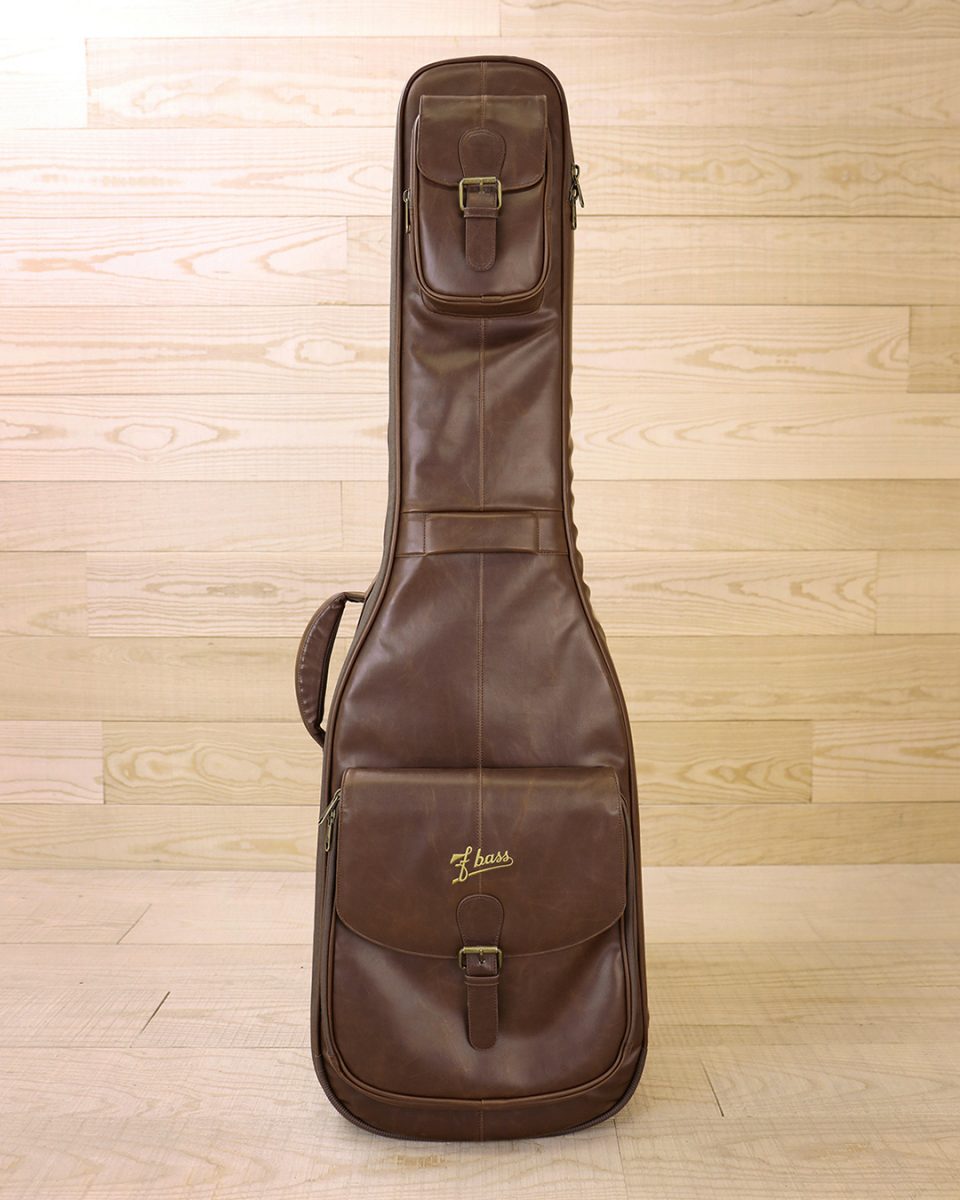General
What is your warranty?
Regardless of being the original owner or not, our instruments come with a limited lifetime warranty against manufacturer defects. So if an issue arises due to our design or craftsmanship, the work is covered by us for the lifetime of the instrument. The owner would only be responsible for shipping to & from our shop in Hamilton, ON, Canada. The following is a warranty breakdown on other specific items (coverage includes parts & labour, though shipping charges will apply):
- Pickups & Preamp are covered for 10 years from invoice date
- Potentiometers & Input Jack are covered for 5 years from invoice date
- Gig bag is covered for 1 year from invoice date
What’s the lead time?
Depending on the model and specs chosen, our builds can take upwards of TWO YEARS from order date. In most cases it’s closer to 20 months. We know it’s super exciting to order a custom build and we absolutely love working with our players on their dream instruments, but please be patient while the team crafts your bass. We’re currently navigating historic labour & supply-chain delays due to the global pandemic and promise you we’re putting every effort forward to minimize lead times. We guarantee it will be worth the wait! As something of bonus, this lead time serves as built in interest-free “financing”.
How is the serial number deciphered?
The 6 digit serial number is located on the back of the headstock, inside the backplate, and/or inside the neck pocket. The first 2 digits denote the number of bass made that year (resetting at 100), the second 2 digits denote the month production began, the last 2 digits denote the year made. For instance the serial number 701018 would make it the 170th build made in October of 2018.
What are the string gauges?
C .029″, G .043″, D .063″, A .085″, E .102″, B .128″
Is a gig bag enough protection, do you sell hardshell cases?
For local gigs and sessions an F Bass gig bag is more than sufficient protection with its dual reinforced sidewalls, water resistant poly fabric and poly leather, and one-inch thick high-density foam lining. For roadwork and travelling we suggest an ATA rated hardshell with high quality latches and wheels, our favourite being the SKB iSeries Open Cavity Case.
Do you ship to my Country?
We love our international bassists and regularly ship worldwide, either directly from our shop or through an authorized F Bass dealer. If your country isn’t supported by an F Bass dealer,you may order directly from us at F Bass. Note that we always ship with insurance, a tracking #, and declare at the full value to abide by laws and insurance guidelines.
What is your cancellation & return policy?
If you aren’t 100% satisfied with your F (to be honest, it’s a VERY rare occurrence), we’re happy to work through possible resolutions via spec changes, set up tips, hardware swaps etc. If you ultimately need to cancel or return your F then the following would apply:
- Made-To-Order/Custom builds require a minimum $2000 USD deposit. If the order is cancelled during production then you would forfeit $1000 of the deposit and the remainder would be returned. However, if you cancel and your build has yet to enter production, then that deposit is 100% refundable.
- Custom orders are not eligible for return. Though if you purchase a new or used in stock instrument, we accept returns within 7 business days and a 10% re-stocking fee would apply
What are exposed-core strings and are they prone to breaking?
The core of the stainless steel round wound is completely exposed over the saddle for maximum contact. This produces excellent clarity, quick attack, clean fundamental, a smooth & comfortable feel, and piano-like sustain. While many fear the delicate looking exposed-core is prone to breaking at the bridge, fear not, they are very durable and are no less likely to snap than a traditional full-core round wound string.
Does Neck-Through construction sound better than Bolt-On?
“Better” is subjective to the player.
We actually find that a wider range of players prefer Bolt-On. It has a quicker attack & an overall more lively tone, is more responsive to playing dynamics, doesn’t render the entire bass worthless if the neck is damaged beyond repair, and it’s standard to boot. The neck-through construction has always and will always be an option for those who want a little more compression and sustain. It’s a positively beautiful thing in the upper register.
Why does the colour/finish vary slightly from bass to bass?
The type of wood used, the lighting of the photograph, screen/monitor settings, and rarely, the changes in our dye supply, all have a role in minor colour variations of the finished product.
Maintenance & Setup
How do I clean my bass?
For Mac Ebony, Gabon Ebony, and Rosewood fingerboards, lightly steel wool with 0000 (very fine grade), blow clean, and rub in natural “Tung Oil” which is a sealing oil. If the fingerboard is Maple, follow up the steel wooling with a guitar polish that doesn’t contain silicone. Our favourite is Ken Smith’s Pink Polish. This polish is also recommended for cleaning the body and back of the neck.
How do I liven dead strings?
In some cases you can “massage” the string back to life by gently stretching without adding pressure to the bottom ball end or top nylon wrap end. Retune. Stretch. Retune.
On an instrument in which the strings are through the end of the bridge:
- Detune enough so that you can push the ball of the string free of the bridge
- Place a protective layer (business card or cardboard) behind the bridge so as not to damage the finish
- Grip the string just above the saddle and spin it clockwise (to the right viewing from the bridge to the neck) two to three turns.
- Hold the string in place at the bridge to keep it from spinning back and re-tune. It should be as bright as the rest of the set
On a bridge with strings through the body:
- Detune enough so you can pull the string off the tuning peg
- Spin the string clockwise (to the right viewing from the neck to the bridge) two to three turns
- Hold the string from spinning and re-insert into tuning peg and re-tune
This may work on a variety of strings, but not always, as some strings may be completely dead and not simply coming un-wound.
How do I eliminate fret buzz?
As much as we try to control mother nature, wood will always be susceptible to changes in temperature and humidity. The first step is to ensure you aren’t leaving your bass exposed to prolonged periods of direct sunlight and that you monitor room humidity, ideal room humidity is 40-50%. It’s recommended that you double check your set up/neck straightness every season for optimal performance.
The first step would be to ensure a perfectly straight neck by adjusting the truss rod:
- First, you’ll need to create a straightedge reference point. Depress the first fret with your left hand, press the last fret with your right hand pinky, and tap towards the middle of the fingerboard (around the 10th fret) with your right hand thumb….you should have about 0.25mm – 0.5mm of relief (a little less than the thickness of a credit card) between the top of the fret and the bottom of the string.
- If there’s more space, you need to tighten the truss rod with a 4mm (5/32”) allen wrench and turn clockwise, towards the floor in the seated position. If there’s less space (i.e string touching the fret wire) you need to loosen the truss rod by turning counter-clockwise. Work in quarter turns and tune between adjustments.
Next would be to adjust the string height:
- If the neck is straight and you still experience buzzing then your string(s) could be set too low.
- Raise the string saddle a half-turn at a time to eliminate possible buzz. You’ll need a 0.050” allen key for B Style & Vintage Bent Plate bridges and a 1/6” allen key for A Style bridges. Make sure both saddle height screws are adjusted by the same amount to ensure the saddle is perfectly straight. Raise by turning the allen key clockwise, counter-clockwise to lower.
- Once the buzzing is gone you can slightly raise the other strings to follow suit…ensure that the string heights follow the radius of the fingerboard.
Lastly, string change:
If you’re still experiencing some buzzing it could be the strings. The stock exposed-core strings are more prone to buzzing vs full-core strings as they’re so sensitive to movement. Our favourite full-core Steels are medium gauge Labella RX and DR Fat Beams and our favourite Nickels are LaBella RX and DR Lo-Riders.
Can I use different strings on my F Bass?
Absolutely, have fun experimenting as strings can really help tailor the sound & feel to your taste. Our BN and AC models may come standard with Exposed-Core strings, but the standard saddles can also take various full-cores, flatwounds, and tapewounds. You may simply need to compensate the difference in string size by adjusting the saddle height. Our favourite full-core strings are LaBella RX Nickel, LaBella RX Steel, DR Lo-Rider Nickel, and DR Fat Beam Steel (in Medium Gauge).
Tonewood
What’s the difference between Maple, Mac Ebony, & Rosewood fingerboards?
Maple is the brightest and most articulate of the three fingerboards. It produces a punchy and focused midrange and has the quickest attack (i.e how fast a note can reach full volume). This makes it very versatile and ideal for slapping. Mac Ebony is very dense and lends itself well to a big and tight low end, a flatter midrange response, and an articulate yet slightly warmer high end than Maple. This fingerboard also offers a nice natural compression for clean note distinction, ideal for quick runs and chords. Rosewood’s composition produces a beautiful natural warmth with a rich midrange and rounder low end…it’s “woody” character really shines when you dig in.
Does the topwood species affect the tone?
The short answer is…not as much as you’d think.
The tops are thin enough that we’re not hearing much, if any, difference between something as soft as Buckeye or as dense as Macassar Ebony. What we are hearing vs a non-topped bass is that glued joint right across the entire face of the instrument. This added compression adds focus and punch to the overall tone. So if you love good tone, have fun choosing the top that you’re most attracted to.
Why use Northern Ash for the body?
Northern Ash is the perfect canvas with it’s focused low end, neutral midrange, and articulate high end. From there you can paint your tone via the fingerboard, body wings, pickups, hardware, etc. The Northern Ash body (or Centre Block) ensures that the tone doesn’t become overly muddy or mushy regardless of the other specs it’s paired with. We find it out performs Swamp Ash, in that Northern Ash has tighter lows and controlled highs….Swamp Ash can sound a little “light” and “hairy” on the top end. As an added bonus, the pores are large enough to have fun with grain enhancements and transparent finishes.
Why are Exotic Tops a little pricey?
Beyond the cost of the raw materials, our exotic top options come standard with matching pickup shells, a matching neck heel (where applicable), and a matching headstock. To give the top a more refined and finished look, we add an Ebony veneer underneath and vacuum press the top to match the curvature of the forearm carve…rather than gluing it flat and simply carving away that beautiful exotic wood.
Electronics
When do I need to replace the 9V battery?
You should be changing your battery if it meters at 7V or less. You will hear distortion in the sound and/or a loss in output. The current draw on the battery is 30 micro amps, so a regular 9V battery should last for four to six months of regular use. To ensure prolonged battery life; be sure to unplug the instrument when not in use, as inserting the plug into the jack activates the battery circuit.
Do the wooden shells affect the function of the pickup?
Nope! Pickup response is only affected by metallic materials that can redirect the magnet’s path.
For our BN & fretless models, we were never fans of conventional pickup aesthetics: a large black object “intruding” on a beautiful piece of wood carefully selected for its look and tone.
Can the bass be plugged directly into a recording device?
Yes. They record very well “flat”. The output impedance of the active models is 600 ohms. Such low impedance allows the instrument to be plugged directly into most audio preamps without signal loss. Though please be careful when plugging into mixing boards with phantom power, those channels are intended for microphones and can overload the onboard F Bass preamp.
Why make your own pickups in the BN and AC series?
We could not find the sound we wanted in commercially available pickups. Our ideal tone was a thick, rich sound reminiscent of a good vintage bass but with a sweet rather than harsh high end. It also had to cut through any mix and be switchable from true single-coil to hum-cancelling. We needed the flexibility & control to make a pickup that adapted to our basses & specs rather than the other way around. Experimenting with pickups has led to a better understanding of the function of tone, and how the components and processes in a pickup alter the final sound. Having knowledge of all the facets of an instrument simply results in a better instrument. Further, handwound pickups seem to respond better to playing dynamics and sound more open and musical than mass-machine-made pickups.
Do Exposed-Pole pickups sound different from Non-Exposed?
Exposed-Pole pickups produce a little more output and high-end shimmer at the stock factory pickup height. While the magnets in exposed-pole pickups are a little taller, you can achieve a very similar tone by raising your stock F Bass pickups 1-2mm…we simply find that some players don’t like their shells that close to the strings.
What do the controls do?
- 1st row starting closest to the neck: Bridge Pickup Volume (push in for single-coil mode, pull out for hum-cancelling mode), Piezo Saddle Pickup Volume, Tone (push in for active mode & pull up for passive mode)
- 2nd row starting closest to the neck: Bass Boost, Mid Boost, Treble Boost
- 1st row starting closest to the neck: Bridge Pickup Volume (push in for single-coil mode, pull out for hum-cancelling mode), Bridge Pickup Tone, Piezo Saddle Pickup Volume, Piezo Tone (push in for active mode & pull up for passive mode)
- 2nd row starting closest to the neck: Bass Boost, Mid Boost, Treble Boost
- 1st row starting closest to the neck: Neck Pickup Volume, Bridge Pickup Volume (push in for single-coil mode, pull out for hum-cancelling mode), Tone (push in for active mode & pull up for passive mode)
- 2nd row starting closest to the neck: Bass Boost, Mid Boost, Treble Boost
- 1st row starting closest to the neck: Neck Pickup Volume, Bridge Pickup Volume, Tone (push in for active mode & pull up for passive mode)
- 2nd row starting closest to the neck: Bass Boost, Mid Boost, Treble Boost
- 3-Way Toggle Switches: Down is Series Humbucking, Middle is Single-Coil, Up is Parallel Humbucking
- 1st row starting closest to the neck: Neck Pickup Volume, Bridge Pickup Volume, Tone (push in for active mode & pull up for passive mode)
- 2nd row starting closest to the neck: Bass Boost, Mid Boost, Treble Boost





